
Nicole Anderson explores ancient central China by 2 bullet trains.
Long gone are the days when Beijing and Shanghai were understood to be the only main Chinese cities easily accessible for travel to and from for visitors. Today China has an amazing travel network that allows you to reach many stunning areas quickly, safely, and comfortably. If you are keen to get away from major cities and see more of this beautiful country, I would suggest you travel by train. A trip from Xian to Yichang exploring central China by 2 Bullet Trains, stopping along the way, was something James and I did and I cover the highlights of this here so you can see how much this has to offer.
Central China by 2 Bullet Trains
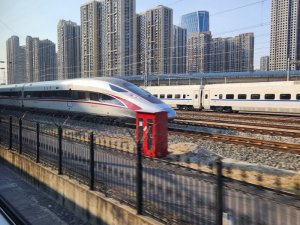
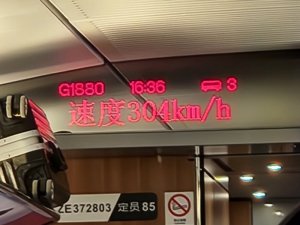
China’s Bullet Trains are very sleek, modern, clean and super comfortable. The experience as a passenger is very much at a high international standard, surpassing many 1st world countries.
These services are highly organised with an exacting timetable. It is extremely rare to hear of any trains not departing to the minute stated on the schedule. In short if your train is leaving at 07:31, don’t bother arriving at 07:32 hoping to catch it as it would have left the platform a minute ago as planned!

From your seat you can also track your speed and progress and you rocket toward your next station, edging ever closer to your destination at speeds over 300 kilometres an hour, and all the while the train feels as though it is gently, silently, gliding effortlessly across the country.
On board, you look out of crystal clear, clean windows to gorgeous views that continually change as you move from one vista to another with the light also changing as the day progresses. For those that start to get a bit thirsty or hungry taking in the magnificent landscapes surrounding them, food and drink is also available on board via trollies that come through the cabin offering a wide variety of local brands and accepting local currency.
All told, this cannot be compared to your average commuter or even long-distance rail experience. It is indeed in a category of its own. Extremely opposite to our experience of standards of train travel in Egypt for example, but every bit as exciting and enjoyable.
Travelling Xian to Yichang: our itinerary
Our itinerary for this adventure began with flying into Xian from Beijing. We had just finished experiencing the wonderful countryside and attractions around the Great Wall of China from Beijing and were very excited to see central China and the amazing history and culture this country is renowned for.
Our final destination via the Bullet Trains was selected as Yichang as this is the closest station for us to begin our planned river cruise along Asia’s longest river, the Yangtze.
Nevertheless, Xian to Yichang is quite a distance and our itinerary was arranged to break the journey by spending time in Zhengzhou, where we could visit and experience some fabulous places that are feature further on in this article.
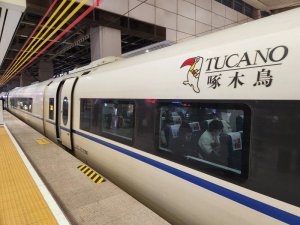
Beginning at the starting point of the famous Silk Road
Starting from the city of Xian (pronounced ‘see-an’) was quite significant simply for two reasons.
The first is how beautiful the location of Xian is. Xi’an lies on the Guanzhong Plain in the south-central part of Shaanxi province, on a flood plain created by the eight surrounding rivers and streams. This large city borders the northern foot of the Qin Mountains (Qinling) to the south and the banks of the Wei River to the north.
In terms of human habitation, The Lantian Man was discovered in 1963 in Lantian County, 50 km (31 mi) southeast of Xi’an, and dates back to at least 500,000 years before the present time. A 6,500-year-old Neolithic village, Banpo, was discovered in 1953 on the eastern outskirts of the city proper, which contains the remains of several well-organized Neolithic settlements carbon dated to 5,600–6,700 years ago! This city became a cultural and political center of China in the 11th century BC with the founding of the Zhou dynasty and has remained a major Chinese center since.
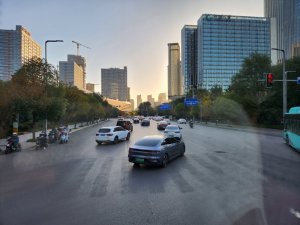
The second reason for the significance is Xian’s recognition by UNESCO, as being the Easternmost point of the Silk Road. This was the starting point of a network of Eurasian trade routes active from the second century BCE until the mid-15th century. The Silk Road got its name from the highly lucrative trade of silk textiles that were produced almost exclusively in China. Spanning over 6,400 kilometers or 4,000 miles, the Silk Road played a central role in facilitating economic, cultural, political, and religious interactions between the East and West. We are talking of land and sea routes connecting Central, East, South, Southeast, and West Asia as well as East Africa and Southern Europe.
Today Xian is now the second most popular tourist destination in China, predominately due to the popularity of one of the world’s most famous archaeological finds ever, the Army of the Terracotta Warriors. Many international tourists fly in to Xian predominately from Beijing or Shanghai to see this amazing site, which is also enormously popular with domestic tourists from every part of China.
Visiting the Army of Terracotta Warriors
Also recognised and listed by UNESCO, the Army of Terracotta Warriors is undoubtedly one of the world’s foremost heritage sites. Located east of Xian city, you travel by road to reach a massive carpark containing mostly tourist coaches and make your way toward the main entrance gates.
Before arriving at the main site, there are workshops and showrooms you can visit which display terracotta warrior replicas of varying sizes available for sale – all the way up to human size. This is the retail side created for tourists and this is presented very well alongside informative tours providing information on how the real and replica statues were/are created.
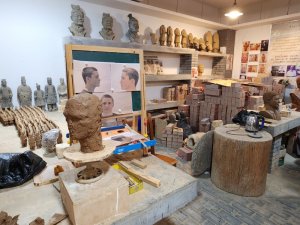
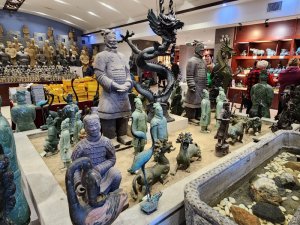
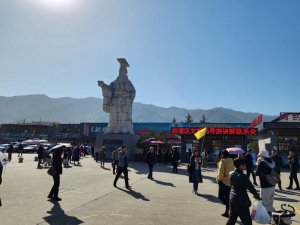
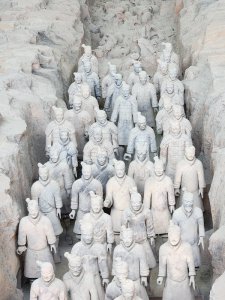
From the main entrance of the actual site, it is quite a long walk to reach a second set of gates that lead to the central site where the Terracotta Warriors are located.
A number of huge buildings have been constructed to fit over the sites where statues have been uncovered in order to protect them and manage the crowds that want to experience this must-see historical find.
As you enter each of the buildings you are blown away by the sheer scale of this archaeological excavation.
The warriors number in excess of 8,000 not to mention the horses and chariots as well as the fact that each face and weaponry of each warrior is different. It is truly remarkable. These terracotta wonders were believed to have been created to accompany the Qin Emperor into the afterlife.
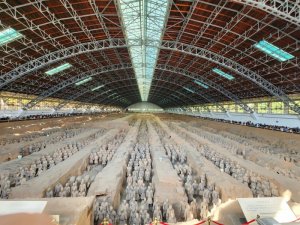
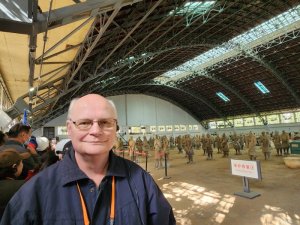
The only downside of this incredible experience was navigating your way through the crowds, although the extent of this did vary somewhat depending on the time and building you visited.
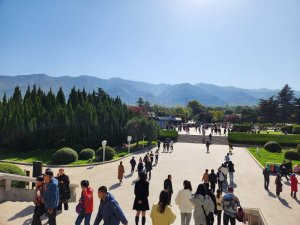
Surrounding the buildings created to house the Terracotta Warriors, were large, open spaces together with beautifully kept gardens with the lovely Qin mountains and surrounding countryside as the backdrop. This made for a delightful setting and atmosphere to such a world famous and significant attraction.

Setting off on our trip
Arriving at the Xian train station, you could be forgiven for thinking this station was a major airport. Indeed, its size is larger than many international airports I have travelled through. The inside was equally impressive and kept meticulously clean. The volume of passengers transiting this location was just amazing but the infrastructure had clearly been designed to handle such a high volume.
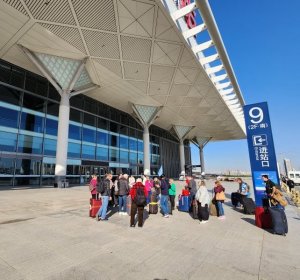
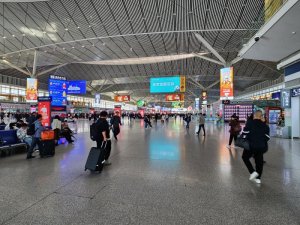
Everything went very smoothly in terms of checking in and having our large bags sent on to baggage compartments. In addition, the station had lots of shops, fast food places and restaurants to enjoy while you waited for your train.
Travelling from Xian to Zhengzhou
Sweeping plains, majestic mountains, serene rivers and cultural influences were all highlights during the approximately 4-hour journey from Xian to Zhengzhou. The speed and stability of the Bullet Train really enhanced the experience as you sat back and relaxed, taking in the scenery and beauty of central China.
We took this journey in the afternoon which also resulted in changes of light as we travelled later in the day. I have included a few photos below to give you a feel of the changing landscapes on this particular route.
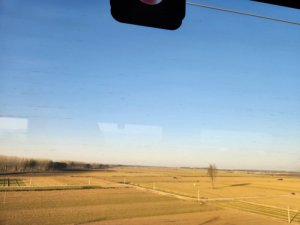
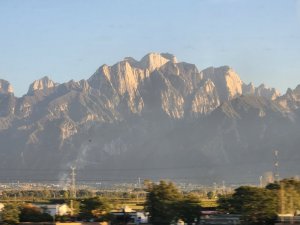
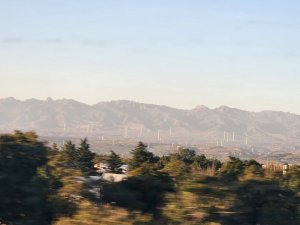
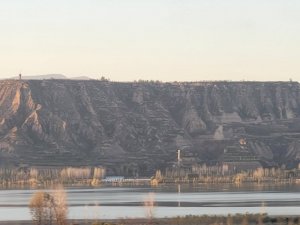

Attractions to see while based in Zhengzhou
After transferring from the train station to our hotel, having dinner, and a restful sleep, we awoke the following day ready to explore.
Zhengzhou is the major center in the province of Henan and the jumping-off point for some significant sites in the region.
The Forested Mountains of Henan and the Shaolin Temple

This beautiful area in which the Shaolin Temple sits is the birthplace of two things that China is world famous for. Believe it or not, this is the place that gave the world Zen Buddhism and Kung Fu. Nestled within these forested mountains we took a tour to travel there and see for ourselves where (and how) both these things started and flourished.
Once we were clear of the city, it was a very scenic trip to the site of the Shaolin Temple. Nestled at the foot of Mount Songshan, the entire area has been developed significantly over the years to allow many visitors access. This includes large courtyards and very wide walkways connecting you to the main sites of interest. Surrounding you on all sides are the hills and mountains of the Henan Forest.
While exploring the area of the Shaolin Temple, we came across a sign in Chinese characters which included an English translation in smaller letters underneath. The translation read ‘Civilisation and landscape together, harmony and scenery coexist’. This struck us as being so true to this beautiful area with such a peaceful outlook. It seemed the perfect place for a religious order to have developed and thrived, respecting the surrounding stunning nature.
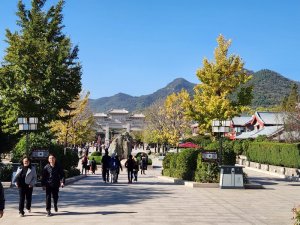
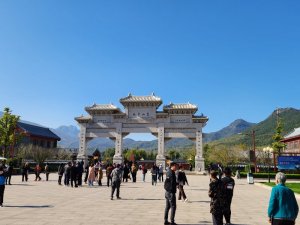
Zen Buddhism
According to the information provided at the site, in 527 AD, Bodhidharma (an eminent Indian monk) arrived at Shaolin Temple and started his propagation of Zen Buddhism in China. This movement grew from this time and place.
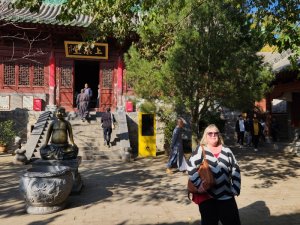
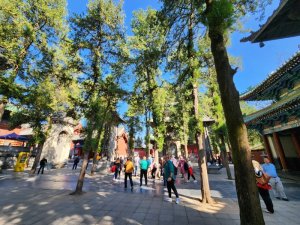
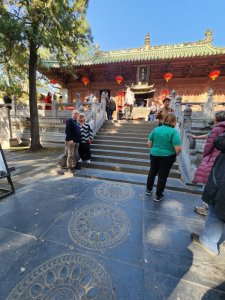
While many tourists do visit the religious temple buildings, it is important to note that the Shaolin Temple and Chuzu Temple here are still upkept and remain genuine worshipping sites looked after by the monks. Key sights to see include the Hall of Heavenly Kings and the Mahavira Hall.
Although you are free to wander through the temple complex the monks will pay you little attention as they are focussed on their duties. Increased tourism may well have popped up around the temple but this is not a distraction for the monks.
The religious and cultural significance of the Shaolin Temple is completely evident as you explore this area in a quiet and respectful way.
It is quite ok to take photos of the beautiful buildings and contents provided you do not interfere with their activities. Included here are some shots of this religious site.
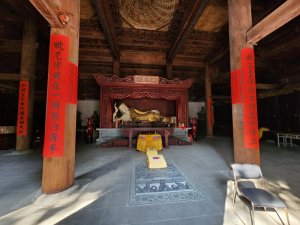
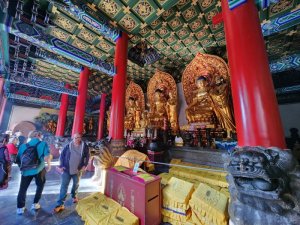
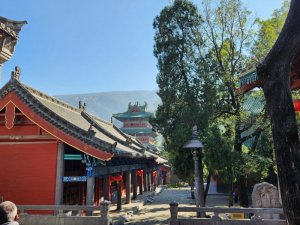
Kung Fu Academy
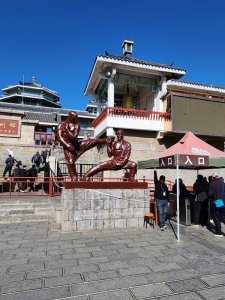
Located on one side of the Shaolin Temple is the Kung Fu martial arts training center. Since the beginning of Zen Buddhism here, it is said that the wisdom of the monks combined with their fighting skills used for defense essentially fused the religion with the martial art of Kung Fu.
The tradition of Kung Fu training of the monks continues to this day. Many students travel from all areas of China in the hope of being accepted into the academy due to the high regard it is held as the preeminent place for the best Kung Fu.
We were able to obtain front-row seats to attend a Kung Fu demonstration which included everything from the traditional Shaolin Kung Fu to associated disciplines involving animal imitation boxing, Qigong and weaponry combat.
It was a truly amazing demonstration of skill and fitness which also had an element of audience participation for a bit of fun.
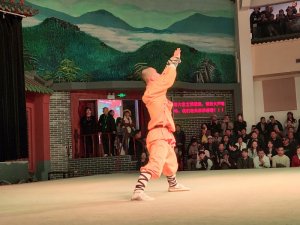
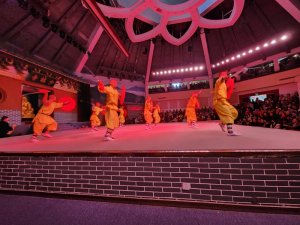
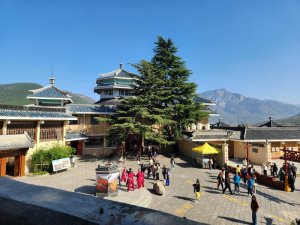
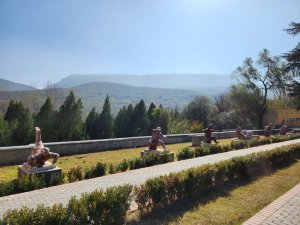
Pagoda Forest
Not far from the main Shaolin Temple is the Pagoda Forest. This is essentially a cemetery of 248 brick pagodas which includes the ashes of preeminent monks. The arrangement of the pagodas amidst the forest area really stands out and is quite a sight to see. This is yet another historial, cultural and religious insight into this captivating region.
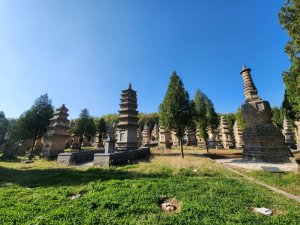
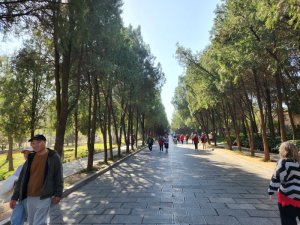
Significant recognition by UNESCO
On 1 August 2010, during the UNESCO 34th World Heritage Committee, eight buildings, including Shaolin Temple, Pagoda Forest, and Chuzu Temple were listed as World Cultural Heritage sites.
Visiting here, you are left in no doubt as to how special and unique this place is and how worthy UNESCO recognition is for this area.
The Shaolin Cableway and Shaoshi Shan
A bit further on from the Pagoda Forest, you reach the foot of Mount Songshan and the Shaolin Cableway which you can take up the mountain, enjoying some wonderful views on the way.
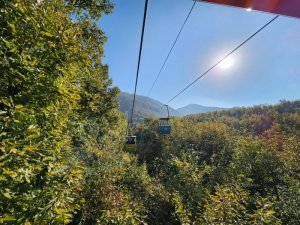
Once you reach the top of the cableway, you aren’t yet at the peak yet. There is still some hiking to do in order to get there at the spot known as Shaoshi Shan, some 1512 meters above sea level and the area’s tallest summit. On the way there are numerous vantage points to take in the scenery as well as the opportunity to visit the fascinating Erzu temple before the final ascent to the peak.
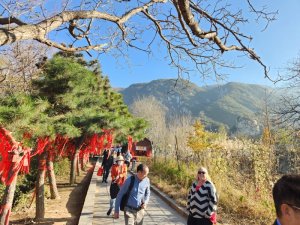
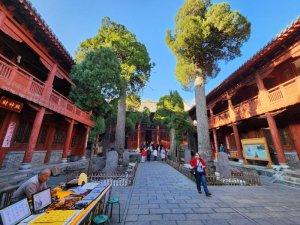
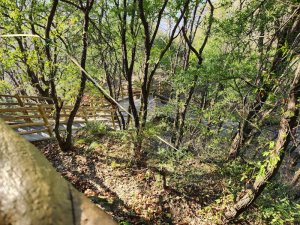

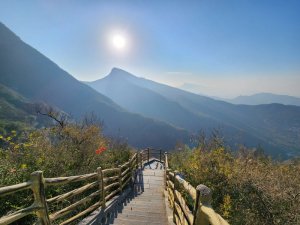
Although many would say the views there are definitely worth the climb, do not underestimate the effort needed to climb. While they have installed steps, there is quite a distance up which requires some level of fitness to do this safely.
It was certainly much easier coming down than going up but it was so beautiful being here. The air was fresh and the flora and fauna of nature were ever present.
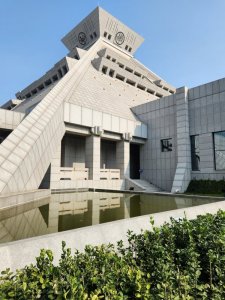
Hunan Museum
One of the things we were keen to do before leaving Zhengzhou and continuing on our eastbound journey via Bullet Train was to visit the pyramid-shaped Hunan Museum.
This is regarded as one of the major museums in China and is the largest center for the collection, protection, study, and display of cultural relics in the hinterland of the central plains.
We found the exhibits as well as the information on the history of the region to be fascinating and well worth the visit.
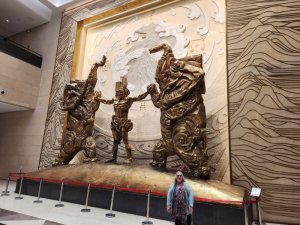
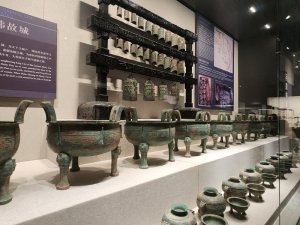
Travelling from Zhengzhou to Yichang
Having spent some time exploring the region of Zhengzhou and the city itself, we were on the last leg of our central China by 2 Bullet Trains journey. Again, we found the enormous train station to be equally as efficient as the one we used to depart Xian.
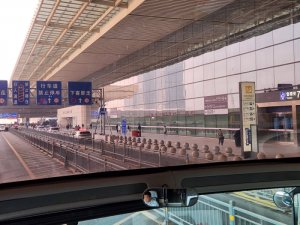
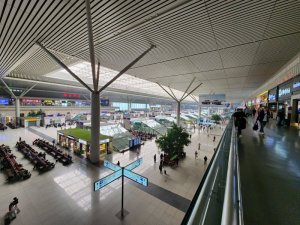
The Bullet Train on this leg was very similar to the first one in terms of space, comfort and amenities, whether this be the climate-controlled cabin, power points for charging your devices or the cleanliness of the surroundings.
Moving fast on the track again and watching the forests, lakes, rivers, fields and mountains go by, was every bit as enjoyable as before with the scenery changing every few minutes.
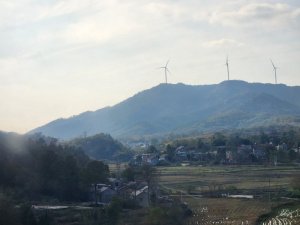
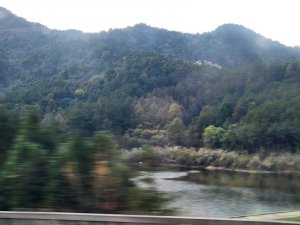
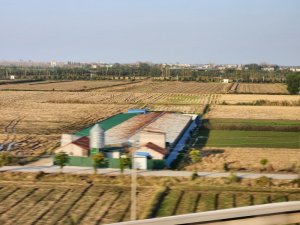
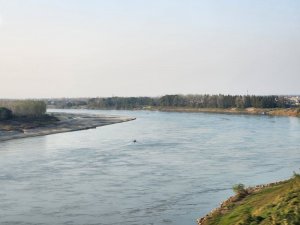
Before we knew it, our wonderful trip exploring Central China by 2 Bullet Trains had come to an end as we pulled into Yichang station.
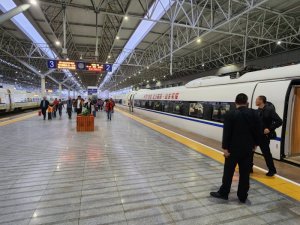
However, this wasn’t so much the end of our adventure as the beginning of a new one as we then headed for the famous Yangtze River to begin a cruise that would bring every more beauty and wonder. I hope you will follow along to when this chapter of our China trip is published soon.
What did you think of traveling through central China by 2 Bullet Trains?
Is this an adventure you would be keen to undertake? Perhaps you have also visited parts of China that you found beautiful. If so, please share your thoughts and/or experiences in the comments section below.
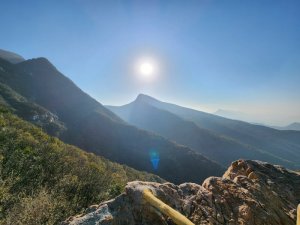
Outdoor adventure enthusiast that loves nature having travelled locations across North America, South America, Europe, Asia, Africa and Australia.
Passionate Travel Writer, Blogger and Influencer.














Leave a Reply